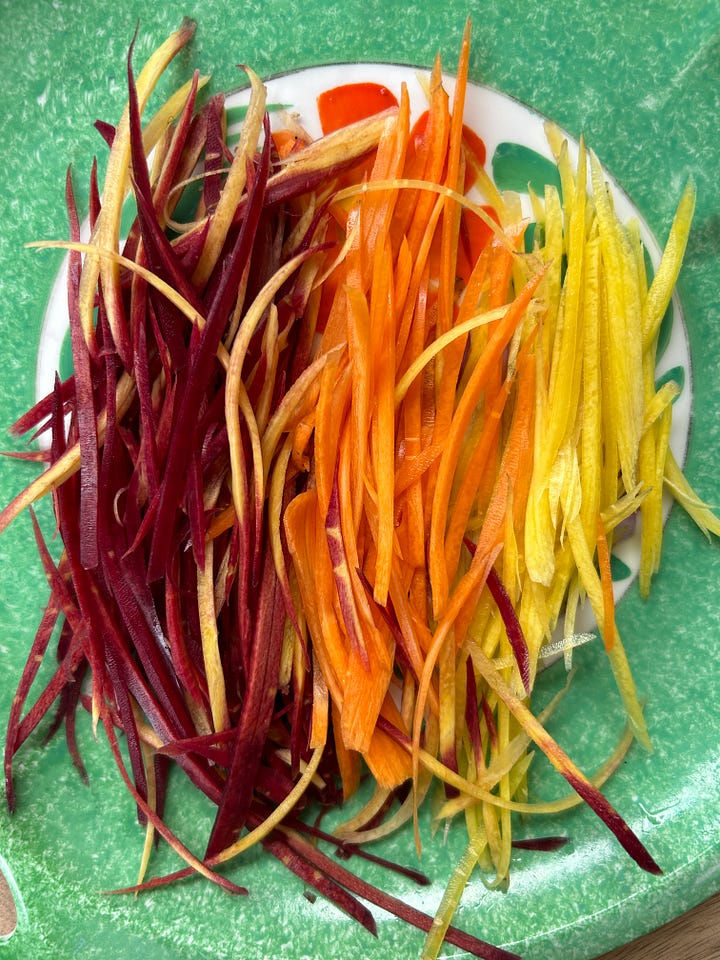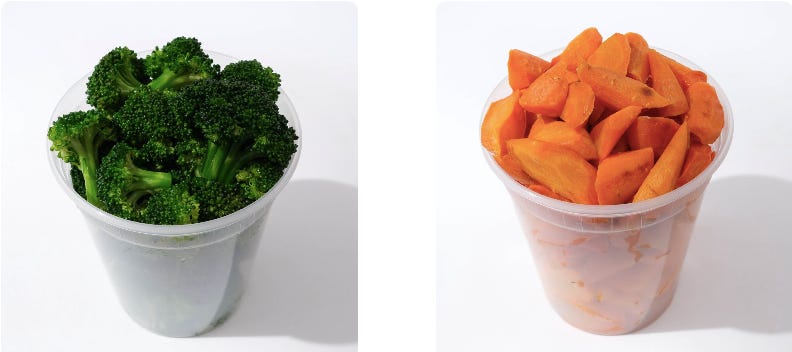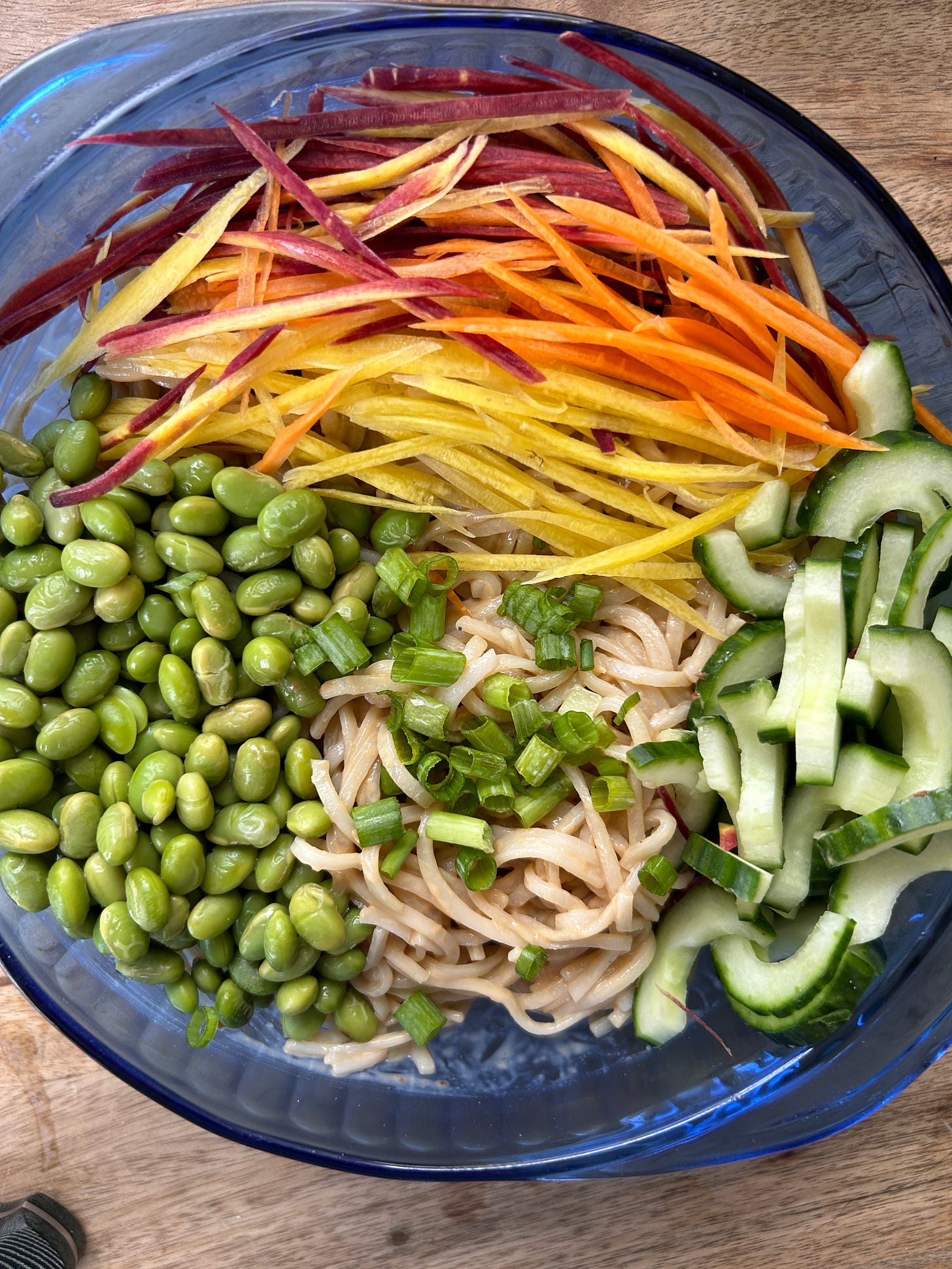The world of food can be small.
I met Eve through a friend while I was running Illuminate. She has always been a cheerleader for what I am doing, and I try to do the same for her.
Eve has deep experience in the food world, and we have both spent time thinking about how to move our food system toward a regenerative future.
Our current system makes it difficult for local food production to scale. As I often write about, I learned from my time running the Illuminate Farm Box that it can be difficult for people to move through so much seasonal produce without the time or energy to cook. Eve reached this same conclusion before starting her company, Marcellus Foods, to help bridge the gap between local producers and eaters by processing food into what they call Preps.
I asked Eve some questions about her business, what she’s learned while building it, and some of her favorite meals to make with preps.
What is the mission of Marcellus Foods?
Marcellus Foods uses processing to connect eaters to regionally sourced food. By doing this we aim to catalyze the widespread transition to regenerative agricultural practices, increase income for farmers and food workers, and lower the price of regional food.
Our goal is to ensure access to abundant, culturally appropriate, and nourishing diets for regional populations while building wealth in disadvantaged and disinvested communities.
We believe this regenerative transformation of our food system is critical to building social, economic, and environmental resilience.
What are preps and how do they connect to a more regenerative future food system?
Preps are freshly cooked whole foods sourced from regional farms that save labor in any kitchen. Preps are designed to make fresh whole foods just as convenient and affordable as conventional processed foods and increase demand for whole food ingredients.
By connecting that demand to underserved regenerative farmers, we can transform regional food systems while putting delicious, nourishing meals within reach for millions of people. As you know well, farmers markets and direct farm sales only make up 0.3% of food spending. Most local and regional food is sold raw and whole, yet over 75% of food purchased in the US is processed. Preps bridge this gap.
Preps are inspired by our time working in restaurants and other professional kitchens. We learned that great prep is the result of skilled labor and the key to making great meals. We primarily designed Preps to reduce time and effort, but they also reduce other common barriers to cooking: equipment, experience, and physical ability.
We sell staples like blanched broccoli, roasted carrots, brothy cooked pinto beans, steamed rice, and braised meats, but our model is flexible enough to work with unique, seasonal, and heirloom ingredients so our assortment reflects a sense of place.
Preps are sold individually and are unseasoned, except for a little salt and sometimes oil to bring out their natural flavor. We get our olive oil from a fantastic olive oil producer in the Capay Valley called Seka Hills. We’re still on the hunt for our favorite neutral oil, so let us know if you have any favorites!
What is your vision for Marcellus?
We are currently working in the Greater Sacramento region to rebuild regional processing capacity and get preps to as many people as possible through our foodservice partnerships and small-format stores.
Our model has a direct impact on regional economies by generating revenue that stays in the community via the money we spend with diverse, regenerative farmers and the wages and benefits paid to our employees. It is designed to build regional resilience: critical climate interventions like electrification of our kitchens and fleet, circular packaging, and food waste reduction also improve the cost structure of our business, so we’re incentivized to make them happen.
Our vision is to create a national network of processors and small-format retail stores that reflect the unique strengths and needs in each region and community where we operate. We see Marcellus Foods as a systemic, structural solution to food systems transformation that makes local, community-led educational efforts actionable and puts delicious, nourishing, culturally relevant food within reach for everyone. It is entirely possible!
We’re working in partnership with the Yolo Food Network, a group of farmers, processors, and food hubs in Northern California, collaborating to increase institutional procurement from regional farms. Our goal is to design a repeatable model that can create transformational change in any region.
What have you learned about home cooks since starting this business?
Wow, we have learned so much since starting this business it’s tough to know where to start! Here are a few highlights:
“Meal acceptance” is a huge issue that doesn’t get discussed nearly enough! Moms do the vast majority of the cooking, and one of their biggest challenges is making something that their families will eat and enjoy. So much mental labor goes into managing this. Our customers often say that one of the main reasons they love Preps is because they can customize meals for everyone in the household with minimal effort.
The mental load of cooking is the biggest barrier for a lot of people. These folks tend to choose solutions that eliminate planning or decision making, even if they aren’t satisfied with the quality, cost, variety, or taste of a product. We heard this frequently from customers who subscribed to meal kits and prepared meal subscription services.
Kids prefer cooked vegetables! This was a fun one to learn. We heard from a lot of parents and school kitchen operators that kids usually get raw fruits and vegetables at lunch because they can be bought pre-cut, like broccoli florets, baby carrots and apple slices. But kids often refuse to eat them because they taste bad or smell weird, and they wind up in the trash. Our “Preps to School” pilot builds on this insight. The pilot will help schools meet their Good Food Purchasing commitments while improving their offering to students.
What is the current perception around prepped ingredients, and what needs to change?
There is a perception that if people don’t cook and instead rely on prepared or processed food, they are lazy or unmotivated. But whether you enjoy cooking or not does not mean you do not care about your health or the quality of the food you eat. Lots of people don’t like cooking or can’t cook for any number of reasons, and they deserve great food. Everyone deserves to eat exceptional food every day, whether they made it themselves or not.
We also need to be much more nuanced in how we talk about processed foods. There is a growing awareness that prepared and processed foods are often unhealthy or low-quality. We need to ensure that the way we talk about them does not shame the people who consume them. We must focus on the systems and policies that make unhealthy processed foods widely available and prevent alternatives from emerging. It can be challenging to do this while demanding a more regenerative food system, but ensuring equitable outcomes is essential.
What problems can we solve by expanding regional food processing capabilities?
By investing in diversified, efficient regional processing infrastructure for fresh foods, we can lower prices. Farmers can increase production and efficiency and pass along some of those efficiencies to their customers. Shorter supply chains lead to lower transportation costs and fewer markups on a product before it reaches the end consumer. Cost reductions across the value chain will allow farmers, processors, and retailers to offer products at competitive prices while still operating viable businesses.
Reducing food waste and loss is one of the most important levers to reduce GHG emissions from our food system. Regional processing can dramatically reduce systemic food waste and food loss. Through product development, processors can market entire crops regardless of their quality and grade, providing consistency for farmers and making a wide variety of in-demand products for customers at a range of price points.
How has your cooking changed since launching Marcellus?
I can never go back to cooking without Preps! I try to make Preps every week but I inevitably fall short. As discussed, making Preps takes a lot of time and effort. Sometimes I really enjoy doing the work myself and see it as a fun, meditative activity. But other times I dread it.
One thing I found is that I bake way more often than I used to! When I have preps around I make fresh bread to pair with my meals more often. Dinner might be a bowl of pinto beans with tons of toppings (herbs, cheese, sour cream, cooked and raw vegetables), a salad, and I’ll bake cornbread or biscuits to go with it. Because the rest of the meal is already cooked, I use the extra time to bake something simple from scratch and it makes the meal 10x better.
Because I rely on a core set of basic ingredients every week, I pull from a wider variety of pantry items to make my meals more interesting. I also experiment with new packaged foods more often, which is fun. I really love to explore different kinds of instant noodles and throw in a ton of vegetables and roasted tofu. Omsom Saucy Noodles are a favorite and I love Mama green curry ramen. Muir Glen makes a canned chili mix that I love to combine with cooked pinto beans and ground beef.
What do you love to make at home?
I’m obsessed with exploring freshly-milled, regionally-grown grains so I LOVE baking and bake two sourdough pan loaves every week.
For casual dinners I love to make what I call “Marcellus pasta” which is just roasted cabbage, walnuts, parmesan, and lemon zest tossed with cooked pasta. Sometimes I’ll add breadcrumbs and parsley, too. A seriously simple, satisfying meal that takes like 5 minutes with preps. It feels elegant and reminds me of an iconic episode of Nigella Lawson’s show where she eats cold pasta out of the refrigerator in the middle of the night.
The Marcellus Instagram is full of amazing recipes and cooking tips, so follow here
Sesame Noodles with Crunchy Veg ✨ 🥕
Inspired by thinking about Preps all week, I put together this recipe that would be 10x times easier with Preps in the fridge. If I had prepped carrots, cucumber, tofu, edamame, and dressing, this would have been done in less than 5 minutes.
These noodles were delicious and perfect leftovers served cold
Ingredients:
Rice or Ramen Noodles
Shaved Carrots
Sliced Cucumbers
Edamame
Scallion (optional)
Tahini
Sesame Oil
Soy Sauce
Rice Vinegar
Ginger
Sriracha or other sauce
Sugar/honey or maple syrup
Steps;
Cook the rice noodles according to the package, drain, and add sesame oil so they don’t stick.
I got this new peeler to julienne the beautiful carrots from Farm to People.
Steam or microwave frozen edamame
Cut your cucumbers
Dressing: Whisk 1 heaping Tbsp Tahini, 3 glugs soy sauce, 1 splash rice vinegar, 1 splash sesame oil, microplane ginger or fine mince, squeeze of sriracha, glug of sweetener then taste and adjust to your liking. Squeeze of lime if you have it!
Toss the noodles in the sauce and arrange veg on top


Eat More Plants 🌱
If you haven’t checked out my E-book on how to Eat More Plants with flexible recipes using what’s in your fridge, check it out!









